

A forearm fracture is a break in one or both of the bones in the forearm. There are two bones in the forearm: the radius and the ulna. The ulna is located on the side of the little finger while the radius is located on the side of the thumb.
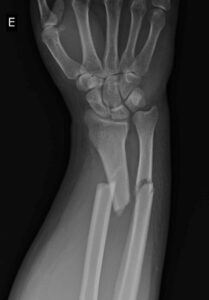
Sometimes, either the radius or ulna is broken. However, it is far more common for both bones to be broken at the same time.
Fractures of the forearm can occur at different levels. For instance, a fracture can occur at the distal end of the bone (near the wrist), in the middle of the forearm, or at the proximal end of the bone (near the elbow)
Fractures of the forearm are either open or closed. A closed fracture occurs when the bone is broken, but the skin is intact. An open fracture occurs when both the skin and bone are broken. This might be caused by some part of the bone sticking out of the skin and breaking it. Open fractures are typically more severe and need immediate attention as the risk of infection is higher due to the exposed tissue underneath.
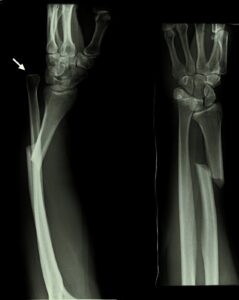
First of all, they are needed for us to turn our palms up and down. They are also needed for bending and straightening the wrist and elbow.
The causes of a forearm fracture can be categorised into two main types: A direct injury, or an indirect injury.
Direct injury
A forearm fracture due to a direct injury means that direct trauma to the forearm has caused the break. They usually involve significant, excessive amounts of force being applied to the forearm. If the force was applied to the location where the bone was broken, then it is a direct injury. Examples of direct injuries that may result in a forearm fracture include:
Indirect injury
Indirect injuries occur when the location of the break is not the exact same location as where the force was applied. An indirect injury that results in a forearm fracture can be caused by

Signs and symptoms for a forearm fracture can be different depending on the individual, their pain tolerance and the severity of the injury. However, some common symptoms include:
The first part of the assessment involves taking the patient history and physical examination. The doctor will need to find out how the injury happened, and if there are any other injured parts of the body. The doctor will then examine the injured arm and look for complications like open fracture, or nerve/blood vessel injuries.
X-rays of the injured arm are then taken. Based on the x-ray, the doctor will then recommend treatment for your injury.
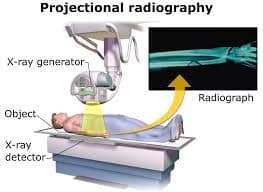
Treatment options vary based on the age of the patient and the severity of the injury. Undisplaced injuries involving only one bone can usually be treated in a plaster cast. For adults, if there is any form of displacement of the broken bones, surgery is usually necessary to treat the fracture.
Nonsurgical treatment
If only one bone is fractured – ulna or radius, then non-surgical treatment may be suitable as the fracture is minimally displaced. The injured arm is placed in a long backslab that extends from the palm to above the elbow. This backslab is then replaced with a full cast a week after the injury. This is to allow time for the swelling from the fracture to subside. The full cast is usually removed 3 to 4 weeks after the injury, and the patient is then started on physical rehabilitation.
Surgical treatment
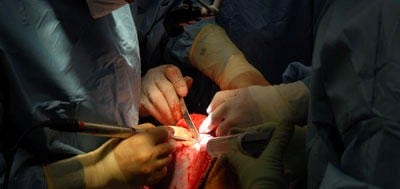
Most forearm fractures involving adults involve both bones in some way. Typically, these injuries are best treated with surgery. The method of choice in adults is open reduction and internal fixation of the fracture, where the skin and soft tissues lying above the bone are opened to allow the bone to be placed back in its original position. The bones are then held in place with metal plates and screws. The process is repeated for both broken bones using separate incisions. There is usually no need for a plaster cast after surgery, and rehabilitation can start immediately. Sutures are usually removed 2 weeks after surgery.
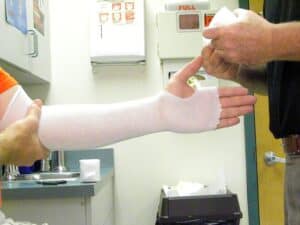
For patients who have undergone surgery, the initial phase of rehabilitation is to improve the range of forearm, wrist and elbow motion. As the arm motions improve, strengthening exercises will be introduced to improve wrist and forearm function. Most patients will be able to return to full function 2 to 3 months after injury.
For an assessment of your condition, please book an appointment with Dr Yong Ren.
Lorem ipsum dolor sit amet consectetur adipiscing elit ut arcu a dignissim suscipit non ac eget tellus in nisl mauris nec.
